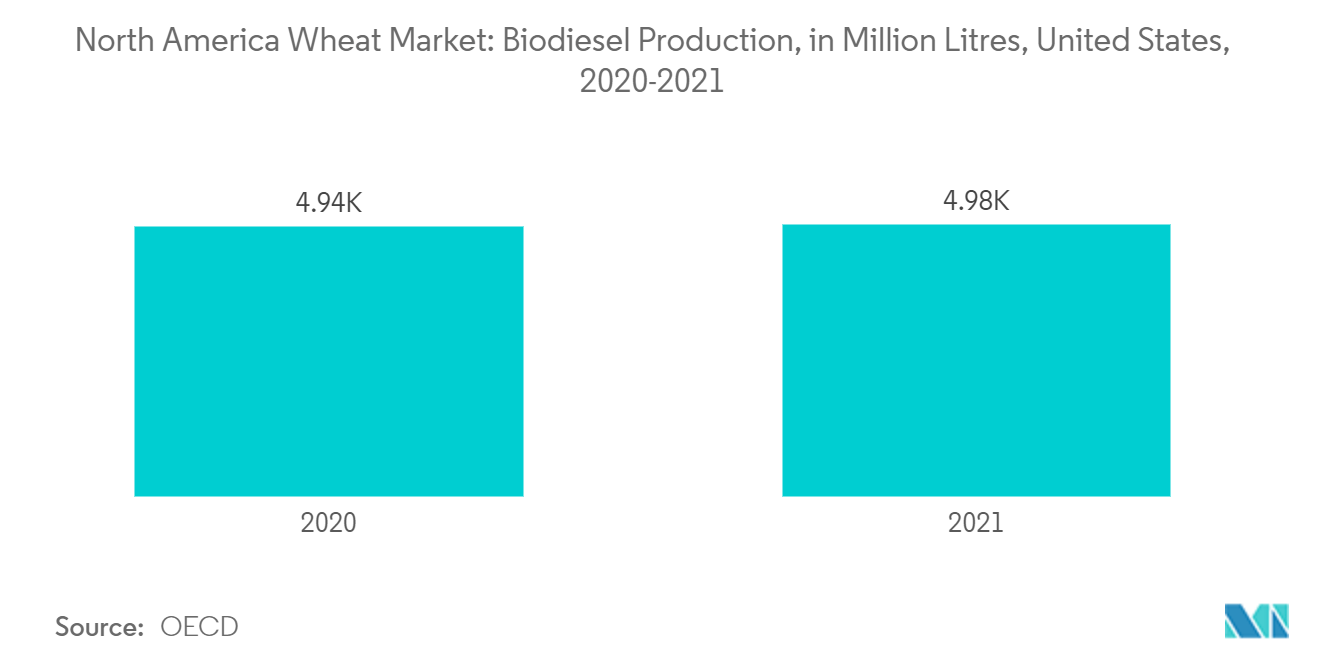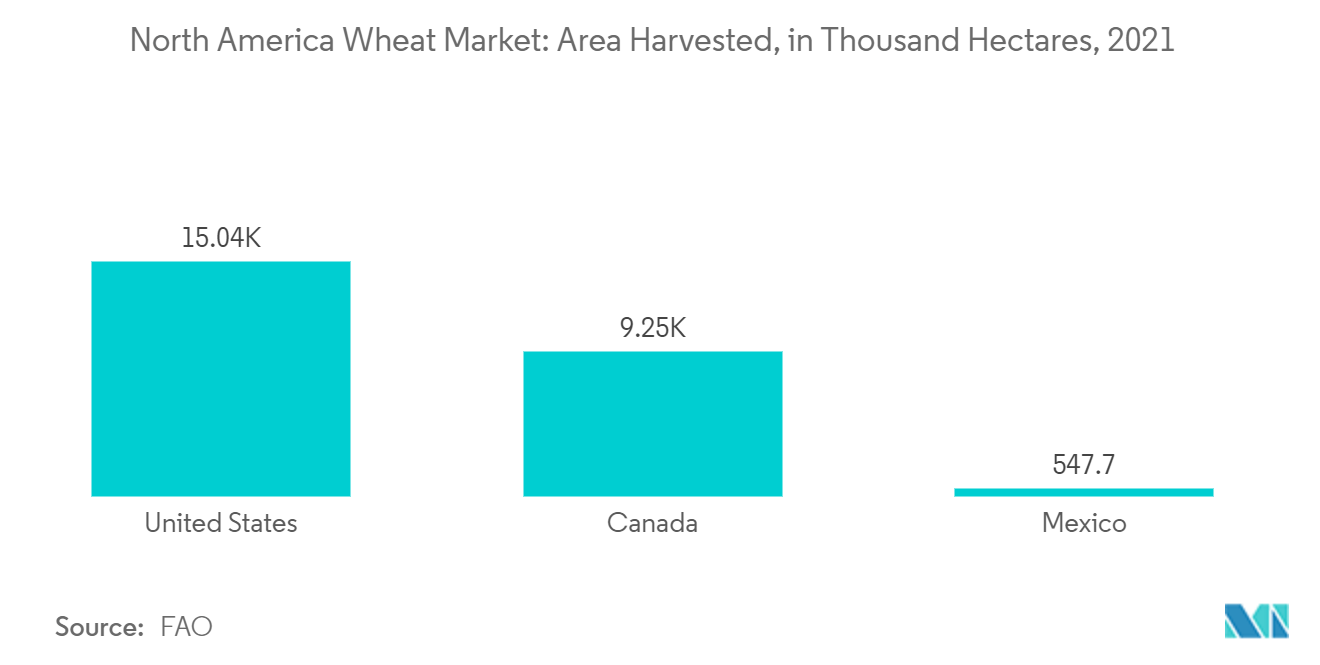Market Trends of North America Wheat Industry
Growing Demand for Biofuels and Animal Feed
- Biodiesel can be produced locally in Canada and can provide local economies with a new market for their agricultural products and waste. In Canada, high-yielding wheat-based bioenergy crops are developed to reduce the dependence on petroleum for transportation and reduce greenhouse gas (GHG) emissions. Although wheat represents a part of the production of biofuels in Canada, only 2.9% of the total wheat harvested in Canada is used for bioethanol production, while corn is mainly used. However, the federal government is providing subsidies to increase the production of biofuels such as wheat ethanol, which is expected to drive the wheat market.
- In 2021, the Decision Innovation Solutions (DIS) of the American Feed Industry Association (AFIA), pets and domestic livestock in the United States consumed approximately 284 million metric tons of animal food. The top three feed consumers included beef cattle at 64.5 million metric tons, hogs at 61.8 million tons, and broiler chickens at 60.8 million tons. Iowa, Texas, California, North Carolina, and Minnesota topped the list for the sheer amount of animal food consumed with 28.8 million metric tons, 21.1 million metric tons, 17.5 million metric tons, 16.3 million metric tons, and 14.6 million metric tons, respectively.

United States Dominates the Market
- Wheat is the principal food grain produced in the United States. The three primary varieties of grain domestically sown are winter wheat, spring wheat, and durum wheat. The country's consumer demand for food products made from wheat flour is relatively stable and largely unaffected by changes in wheat prices or disposable income. According to the United States Department of Agriculture (USDA), the United States wheat highlights included the National Agricultural Statistics Service (NASS) estimate of 34.4 million acres of winter wheat planted for harvest in 2022.
- Although the United States typically produces only about 6-7 percent of the world's wheat, it is a major wheat exporter. However, the country's production was observed at 44,790,360 metric tons in 2021. USDA estimates that farmers have seeded 79% of the 2023 winter wheat crop. United States wheat farmers continue to produce sufficient high-quality wheat supplies to meet domestic and international needs for hundreds of unique baked goods.
- The country's all-wheat feed and residual for 2022 was forecasted to be 30 million bushels lower at 50 million, which triggered the wheat imports to be raised by 10 million bushels at 120 million, up from 95 million in 2021. Kansas, Oklahoma, and Texas are the key producing areas of the Hard Red Winter (HRW) wheat variety which will expand planting areas to elevate the commodity prices.



